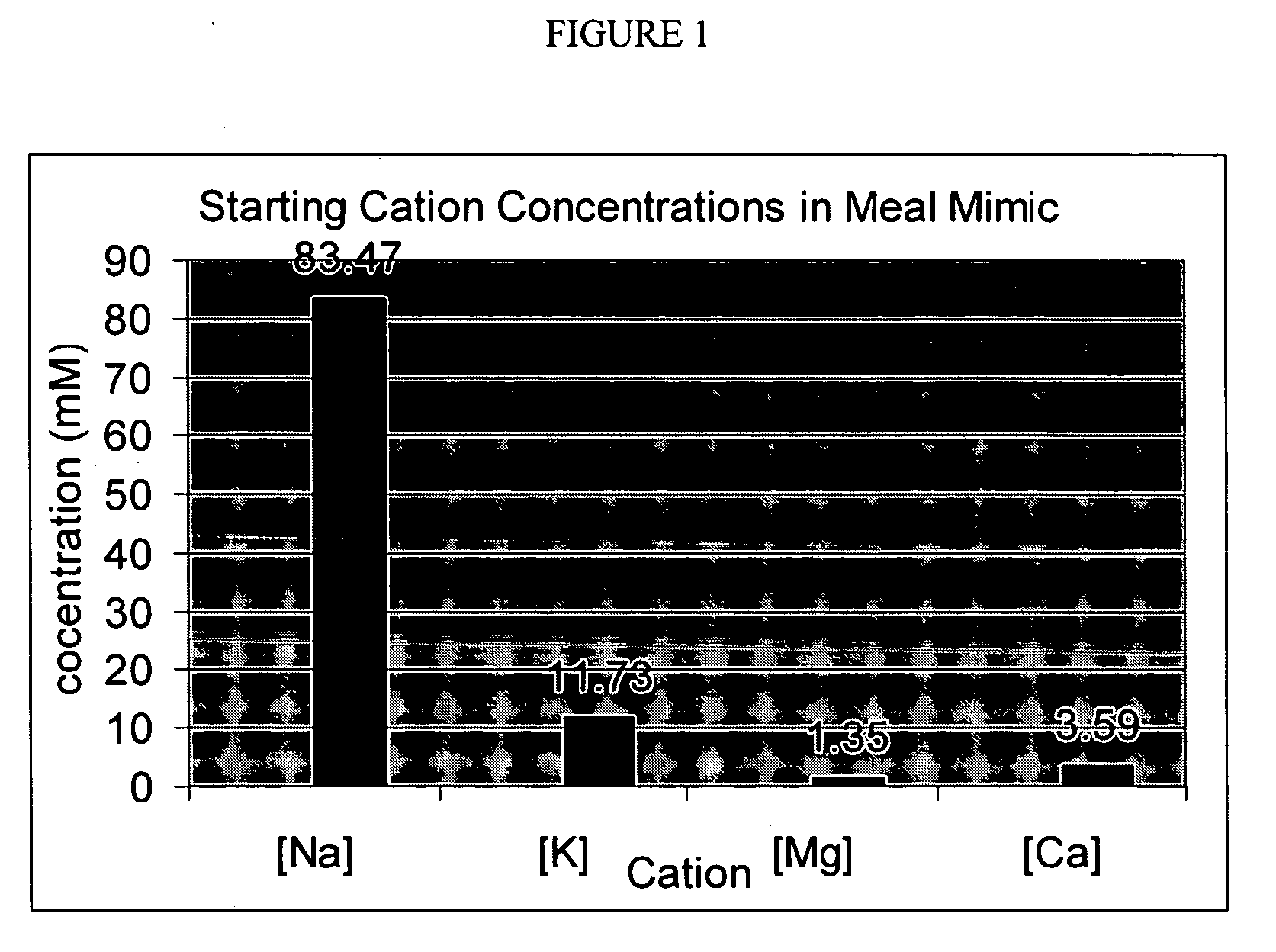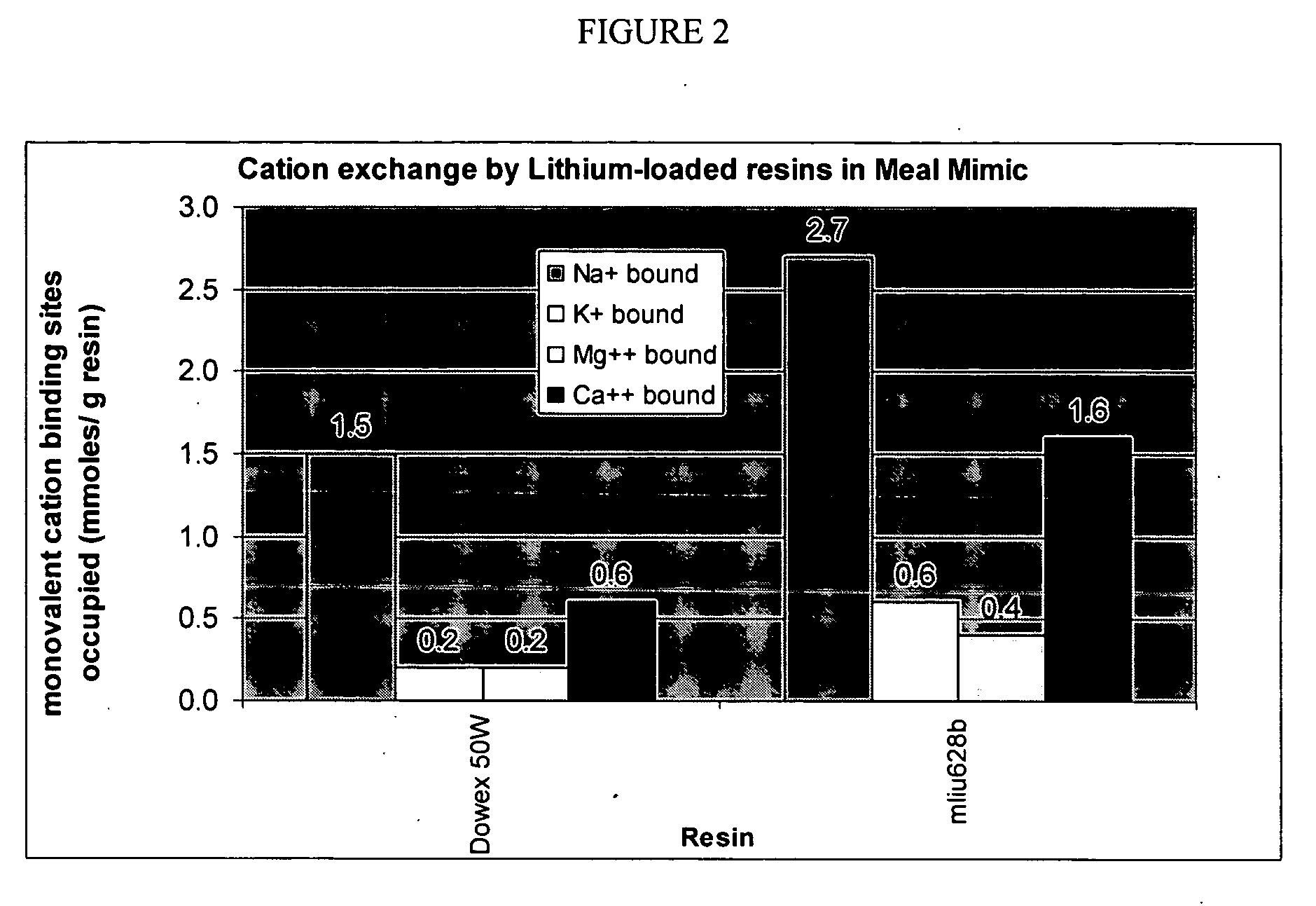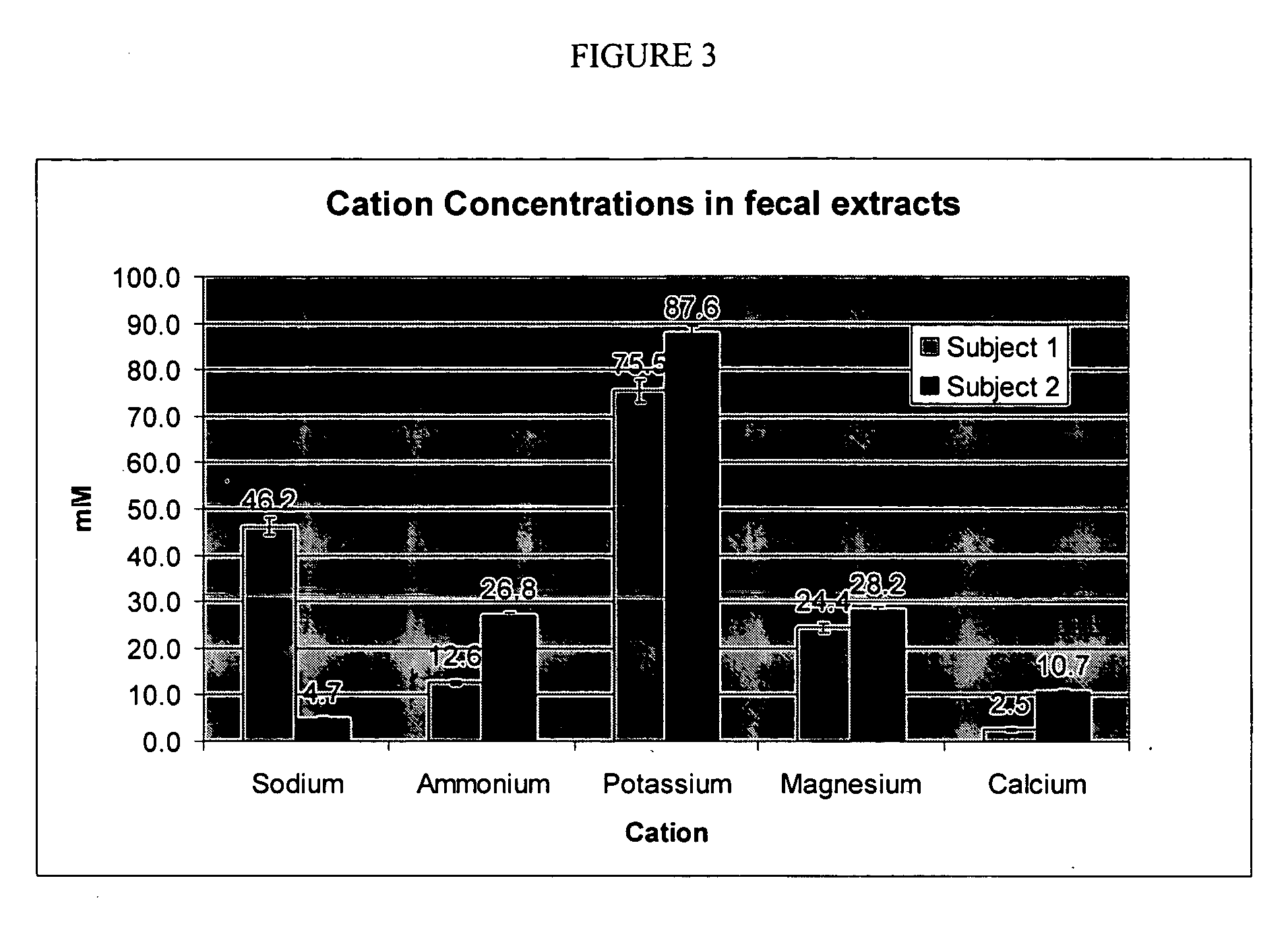Ion binding polymers and uses thereof
a technology of ion-binding polymers and polymers, which is applied in the field of ion-binding polymers, can solve the problems of high risk, high risk of patients at the extreme of life, and certain groups definitely exhibit a higher incidence of hyperkalemia
- Summary
- Abstract
- Description
- Claims
- Application Information
AI Technical Summary
Benefits of technology
Problems solved by technology
Method used
Image
Examples
example 1
Preparation of Polymers with High Binding Capacity
Materials:
[0098] All chemicals were purchased from commercial sources and used as received. All reactions were carried out under nitrogen. Chemical structures and used abbreviations are given below in Tables 6 and 7.
TABLE 6Monomer Abbreviations and StructuresMolecularAbbreviationChemical nameStructureWeightCAS #Na-VSAvinylsulfonic acid sodium salt130.13039-83-6FAA2-fluoroacrylic acid or α-fluoroacrylic acid or 2-fluoropropenoic acid90.05 430-99-9VPAvinylphosphonic acid108.031746-03-8
[0099]
TABLE 7Crosslinker Abbreviations and StructuresMolecularAbbreviationChemical nameStructureWeightCAS#X-V-1ethylenebisacrylamide168.2 2956-58-3X-V-2310.36X-V-3254.33X-V-4N,N′- bis(vinylsulfonylacetyl) ethylene diamine324.3866710-66-5X-V-51,3-bis(vinylsulfonyl) 2- propanol240.367006-32-0X-V-6vinylsulfone118.15 77-77-0X-V-7N,N′- methylenebisacrylamide154.17 110-26-9ECHepichlorohydrin92.52
Initiators: VA-044: 2,2′-azobis[2-(2-imidazolin-2-yl)propan...
example 2
Binding Capacity Screening Protocol
[0108] All experiments were performed in duplicate. Approximately 30 mg of each polymer was aliquoted in duplicate into 16×100 mm glass test tubes. Dowex 50 W and Amberlite CG-50 were included in each experiment as internal controls. The relevant test binding buffer (Buffer 1, Buffer 2 or Buffer 3 below) was added to a final resin concentration of 2.5 mg / ml. The test tubes were sealed using a Teflon membrane and incubated at room temperature, with constant end-over-end rotation, for at least one hour to allow the cations to achieve binding equilibrium with the polymers. The test tubes were then centrifuged at 500 g for thirty minutes to isolate the resins. A sample of the supernatant was taken and the equilibrium concentrations of potassium (K+eq) and sodium (Na+eq) were determined by Ion Chromatography (IC). By comparing K+eq and Na+eq with the concentration of potassium in Buffer 1, Buffer 2 or Buffer 3 in the absence of polymer (K+start and Na+...
example 3
Procedure for Predicting Binding of Cations in the Human GI
[0114] This procedure was used to model the conditions of use of a potassium binder drug and measure the binding characteristics of the polymer for potassium (target solute) in the presence of other competing cations. A meal mimic was prepared and artificially digested in the presence of pepsin and pancreatic juice. The sequence of addition of enzymes and the pH profile were controlled so that the digestion process was simulated down to the jejunum level. The test polymers, preloaded with lithium, were added to the digested meal mimic and allowed to equilibrate for a fixed period of time; the mixture was then centrifuged and the supernatant was assayed for Na+, K+, NH4+, Ca2+, and Mg2+ by ion chromatography. The lithium released was computed as the total cation exchange, while the decrease in concentrations of the other cations was used to compute their binding variations in western diets.
Preparation of Resin
[0115] Resin...
PUM
| Property | Measurement | Unit |
|---|---|---|
| Fraction | aaaaa | aaaaa |
| Substance count | aaaaa | aaaaa |
| Substance count | aaaaa | aaaaa |
Abstract
Description
Claims
Application Information
 Login to View More
Login to View More - R&D
- Intellectual Property
- Life Sciences
- Materials
- Tech Scout
- Unparalleled Data Quality
- Higher Quality Content
- 60% Fewer Hallucinations
Browse by: Latest US Patents, China's latest patents, Technical Efficacy Thesaurus, Application Domain, Technology Topic, Popular Technical Reports.
© 2025 PatSnap. All rights reserved.Legal|Privacy policy|Modern Slavery Act Transparency Statement|Sitemap|About US| Contact US: help@patsnap.com



